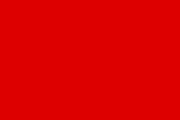Russian Social Democratic Labour Party (of Internationalists)
Russian Social Democratic Labour Party (of Internationalists) Российской социал-демократической рабочей партии (интернационалистов) | |
|---|---|
| Founded | July 1917 |
| Dissolved | October 1919 |
| Newspaper | Novaya Zhizn |
| Ideology | Socialism |
| Colours | Red |
| Party flag | |
 | |
The Russian Social Democratic Labour Party (of Internationalists) (Russian: Российской социал-демократической рабочей партии (интернационалистов)), initially known as the United Social Democrats-Internationalists, was a political party in Russia.
The programme of the group was largely similar to that of the Menshevik-Internationalists, and politically it placed itself between the Menshevik-Internationalists and the Bolsheviks.[1] They were critical of Bolshevik tactics but would remain supportive of the Soviet government.[1] They were a relatively small organization of leftist intellectuals, largely identified with its newspaper Novaya Zhizn ('New Life').[2][1] Whilst the group was quite small, Novaya Zhizn had a significant readership.[1] It was published by the well-known author Maxim Gorky, although Gorky broke with the party in July 1917.[2] Gorky had been the only prominent figure in the organization.[1]
In December 1917
In May 1918 the party underwent a split, with a minority group (who favoured closer relations with the Bolsheviks) broke away and formed their own group.[5] At the Second All Russian Trade Union Congress in January 1919, the party delegation supported the call for unions independent from the Communist Party.[4][6]
In April 1919, the minority that had split in 1918 reunited with the party.[5] The party adopted the name Russian Social Democratic Labour Party and took a more conciliatory approach towards the Bolsheviks.[5] The 4th congress of the party decided to dissolve the party and called on its membership to join the Communist Party.[4] In December 1919 Lozovsky was readmitted to the Communist Party.[3]
Soviet historiography labelled the party as "the far left of the
References
- ^ ISBN 978-0-486-14976-9.
- ^ ISBN 978-0-7864-5667-3.
- ^
- ^ a b c Leonard Schapiro (1956). The Origin of the Communist Autocracy: Political Opposition in the Soviet State, First Phase, 1917-1922. Published for the London School of Economics and Political Science University of London. Harvard University Press. p. 202.
- ^ ISBN 978-90-04-32557-9.
- ISBN 978-1-4331-0883-9.
